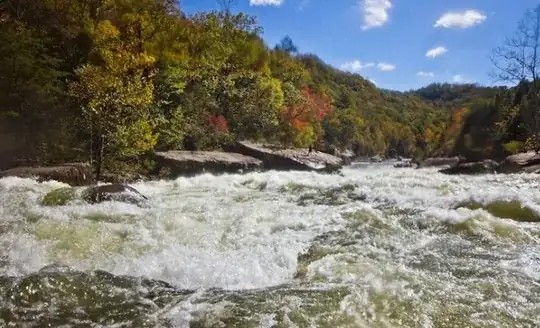Water flows in rivers show a wide variety of organized structures due to the interaction of the flow with its boundary. In whitewater, people give these features names like rollers, vortices, holes, hydraulics, and so on, as depicted below:

It is my understanding that all of these phenomena should be accessible as solutions to the Navier Stokes equations in the incompressible limit, and while it is certain that a number of direct numerical simulations of flows over rough boundaries have produced these types of features, I never see such features derived from the Navier Stokes equations. The one counterexample I can think of is that the book by Morse and Feshbach does derive a simple laminar vortex as a solution.
I am curious if any works have concentrated on very simplified derivations of the various organized flow structures which appear in nature. For example, one could consider that an underwater ledge produces a horizontal roller, whereas the flow going past a barrier produces a lateral vortex.
Acknowledging that most canonical books on open channel flows (i.e. Nezu and Nakagawa) summarize turbulent velocity profiles in flows over a flat boundary, and do not really go much beyond this, I would love to find a collection of "simple harmonic oscillator" style derivations of the richer phenomena contained in the Navier Stokes equations over more interesting boundaries -- reduced-complexity representations of whitewater, with isolated rollers, solitary lateral vortices, and so on. Do any references exist which provide idealized presentations of these real-world phenomena?